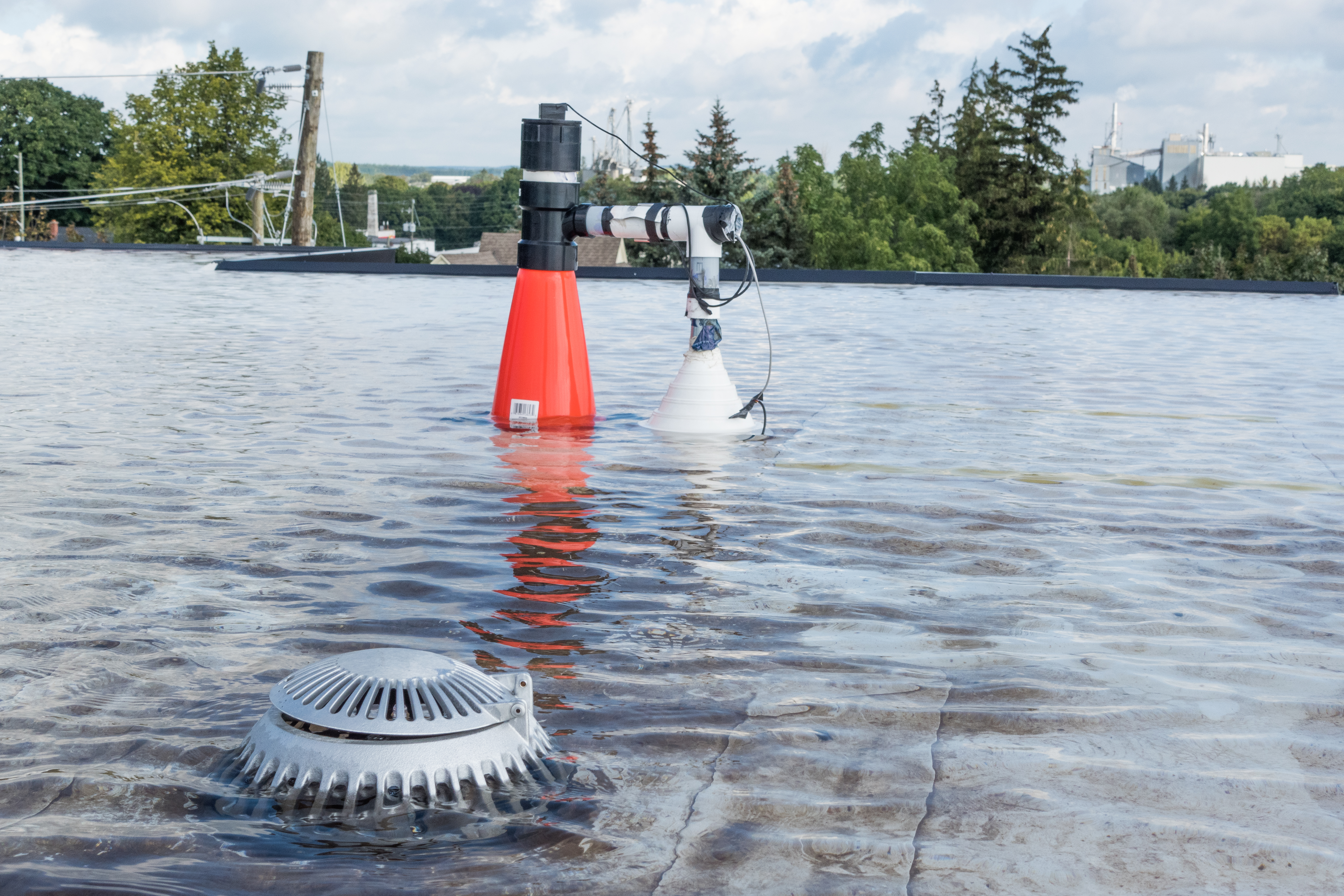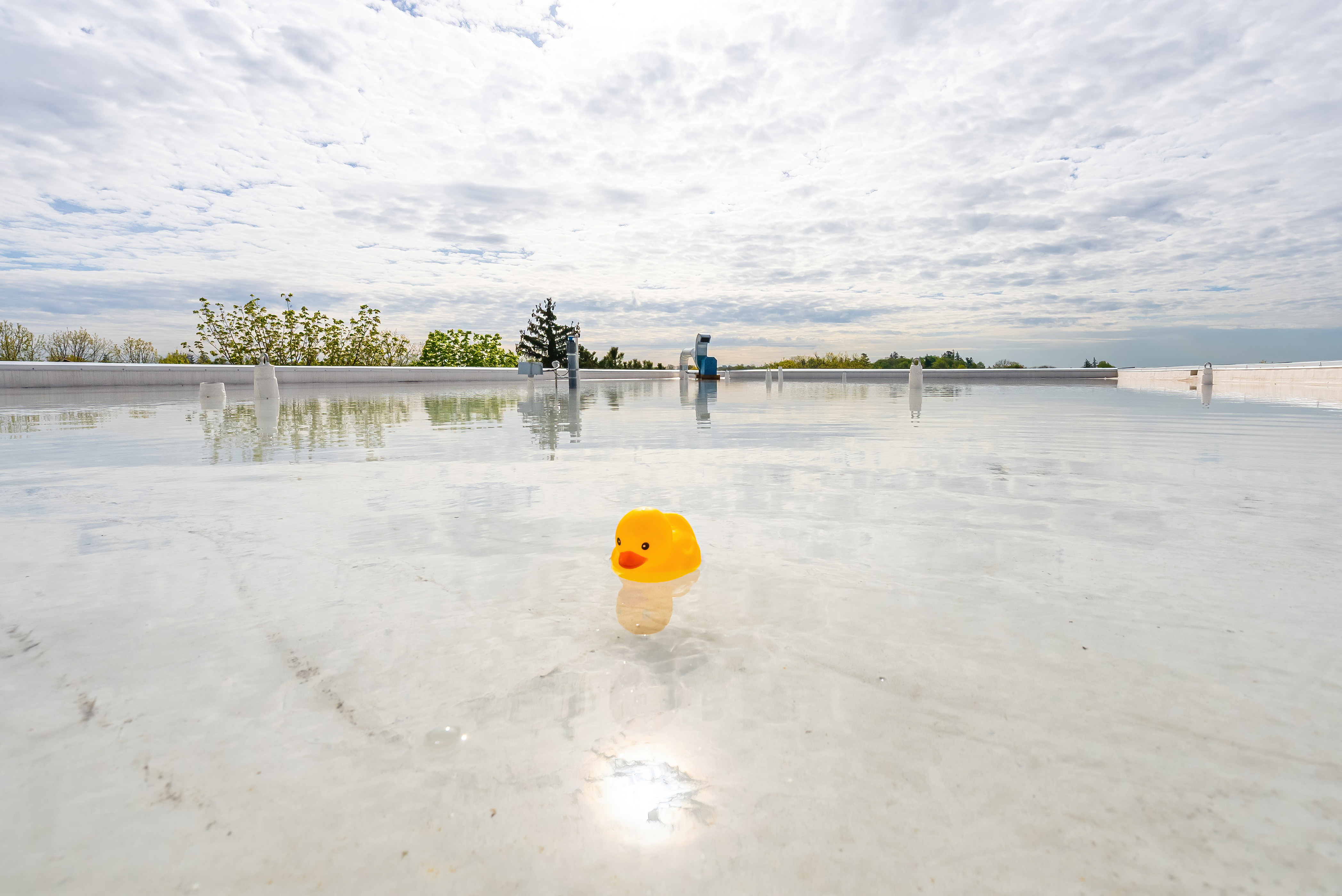Smart Blue Roofs at Enviro-Stewards and CVC, keeping the rain on our heads
Projects Sponsor
The number of flooding-related insurance claims in Canada has doubled in the last decade. Indeed, as a result of climate change, flooding is the leading cause of insurance claims from sea to rising sea, and blue roofs — roofs designed to retain rainwater — have proven to be a reliable, if costly, means of mitigating flood damage.
Blue roofs conventionally involve constructing permanent features on top of roofs, so their use has typically been limited to expensive showpieces on newly constructed (or extensively reinforced) buildings. Rooftop trailblazers Enviro-Stewards are helping put blue roofs within reach of far more modest builds.

Proving that sustainable innovation begins at home, Enviro-Stewards designed and implemented features that enabled a smart blue roof for their headquarters in Elmira, Ontario. Commissioned in June 2021, the affordable design they selected is scalable, as it avoids structural changes by storing water directly on the roof liner (for 3 seasons of the year) and harvests snow melt during the fourth season.
Where blue roof approaches have mostly been designed exclusively around stormwater runoff abatement, Enviro-Stewards’ approach ensures that rainwater is utilized effectively. Rainwater is stored on the roof and flows to a day tank indoors, where the water is treated (with filtration and ultraviolet light) and then fed into a living wall that removes carbon dioxide from Enviro-Stewards’ office (reducing fresh air intake requirements by 97%) as well as the office’s toilets.
In short, you get flushing instead of flooding, with bonus flowering, all while still eliminating stormwater discharge during weather events and reducing the heat island effect to ease air conditioning loads, as well as heating loads.

The new system meant that water consumption within the building decreased by 56% and air conditioning demand decreased by 43%. Needless to say, achieving buy-in from engineers and roofers once you mention storing water directly on the roof is no mean feat. Designing roofing systems that avoid ponding of water has, after all, been their life’s work… and you want to do what now? Why would you court leaks, collapse, and mosquitos?
By constructing a demonstration affordable smart blue roof at their headquarters, Enviro-Stewards was saying, “hey, if it leaks it’s on us.” As it was built, they installed leak detector cables under the roof liner, designed to alert them of leaks via text message (they could then automatically drain the roof with the control valve). There have been zero leaks since the roof was commissioned in 2022.

During one season of the year (winter) the control valves are opened so that no water is stored on the roof (although snow melt is still harvested). This enables the snow load to be used for storing water during the other three seasons of the year.
As for pesky mosquitos, research on their life cycles indicates that they need to be in water for a minimum of one week to reproduce. Therefore, as long as the roof contents are utilized within a week (or the water is treated), the roof cannot grow mosquitos.
Prior to the construction of the blue roof, a downstairs neighbour had been flooded twice due to overloaded storm drains under the (100-year-old) former furniture factory that houses Enviro-Stewards’ head office. During the blue roof’s first season in operation, Enviro-Stewards’ headquarters retained 100% of all storms greater than 1 inch, eliminating discharge to the storm drains.

In the spirit of “it never rains but it pours”, Enviro-Stewards also designed blue roof features for Credit Valley Conservation’s (CVC) headquarters in Mississauga in compliance with the new CSA standard that came into existence following the roof on Enviro-Stewards’ headquarters. Therefore, CVC’s blue roof includes the design of a water treatment system to treat the stored water once per day and return it to the roof. CVC’s blue roof was commissioned in May 2024 with monitoring currently occurring in partnership with Toronto Metropolitan University. Initial results indicate that the roof of CVC’s headquarters has avoided 100% of runoff during storm events and satisfied 75% of their office’s water demand for flushing of toilets.
Enviro-Stewards and CVC also completed a feasibility study of scaling blue roof technology to the community level. The Southdown area of Mississauga is currently prone to flooding. Collaborating with 13 business owners in the community to implement blue roofs for stormwater retention, the feasibility study found that blue roofs would reduce the quantity of stormwater requiring management during weather events enough to shave millions of dollars on stormwater infrastructure capital costs planned for the community.
By designing and demonstrating blue roof technology that’s less boutique and more bootstrap, Enviro-Stewards and Credit Valley Conservation are showing the way to help a lot more people save on a rainy day.













